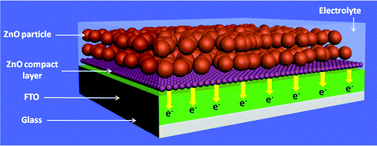Interfacial modification of photoelectrode in ZnO-based dye-sensitized solar cells and its efficiency improvement mechanism
Abstract
A ZnO compact layer prepared by a sol–gel method was introduced into a photoelectrode at the interface between fluorine-doped


 Please wait while we load your content...
Please wait while we load your content...